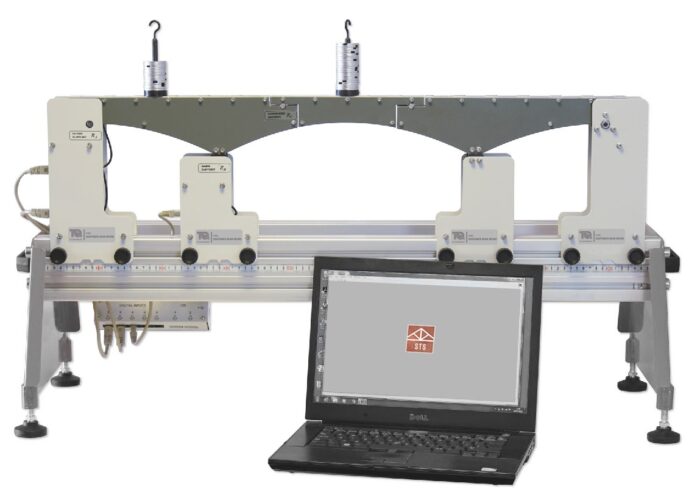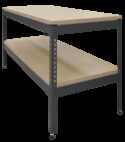Experimento
STS21

Suspended Beam Bridge (Next Generation Structures)
Experiment for the study of the characteristics of a suspended beam bridge. Mounts on the Structures platform and connects to the Structures automatic data acquisition unit and software.
If you have any questions or you'd like to discuss a product, please call us.
+44 1159 722 611Suspended Beam Bridge (Next Generation Structures)
One of a range of experiment modules that fit to the Structures platform (STS1, available separately), this product helps students to understand how loads affect support reactions of a suspended beam bridge, also known as a Gerber beam bridge or articulated bridge. This bridge design differs from some others in that is statically determinate, yet may have large central spans. This product shows students how to indicate the bridge reactions in the form of infl uence lines. The bridge has two outer ‘anchor’ sections, each on two supports. The anchor sections each have a short cantilever that supports a short central suspended section. The four bridge supports include pointers that work with the scale on the platform for accurate positioning. Load cells in the supports and bridge structure measure the reactions to the loads.
Students apply loads across to any position on the bridge and measure the resulting support reactions, and the internal reactions between the cantilever and suspended sections. They use textbook equations to predict the reactions, comparing them with measured results. This helps confirm the reliability of the textbook equations and the accuracy of the experiment results.
The load cells connect to the USB interface hub of the Structures platform for computer display and data acquisition.
Learning outcomes
• Introduction to the suspended beam (or Gerber) bridge
• Support reactions for an increasing point load and a uniformly distributed load (UDL)
• How loads aff ect bridge support reactions and internal reactions between the cantilever and suspended sections
• Influence lines for supports and internal reactions due to a load moving across the beam structure
• The Principle of Superposition








